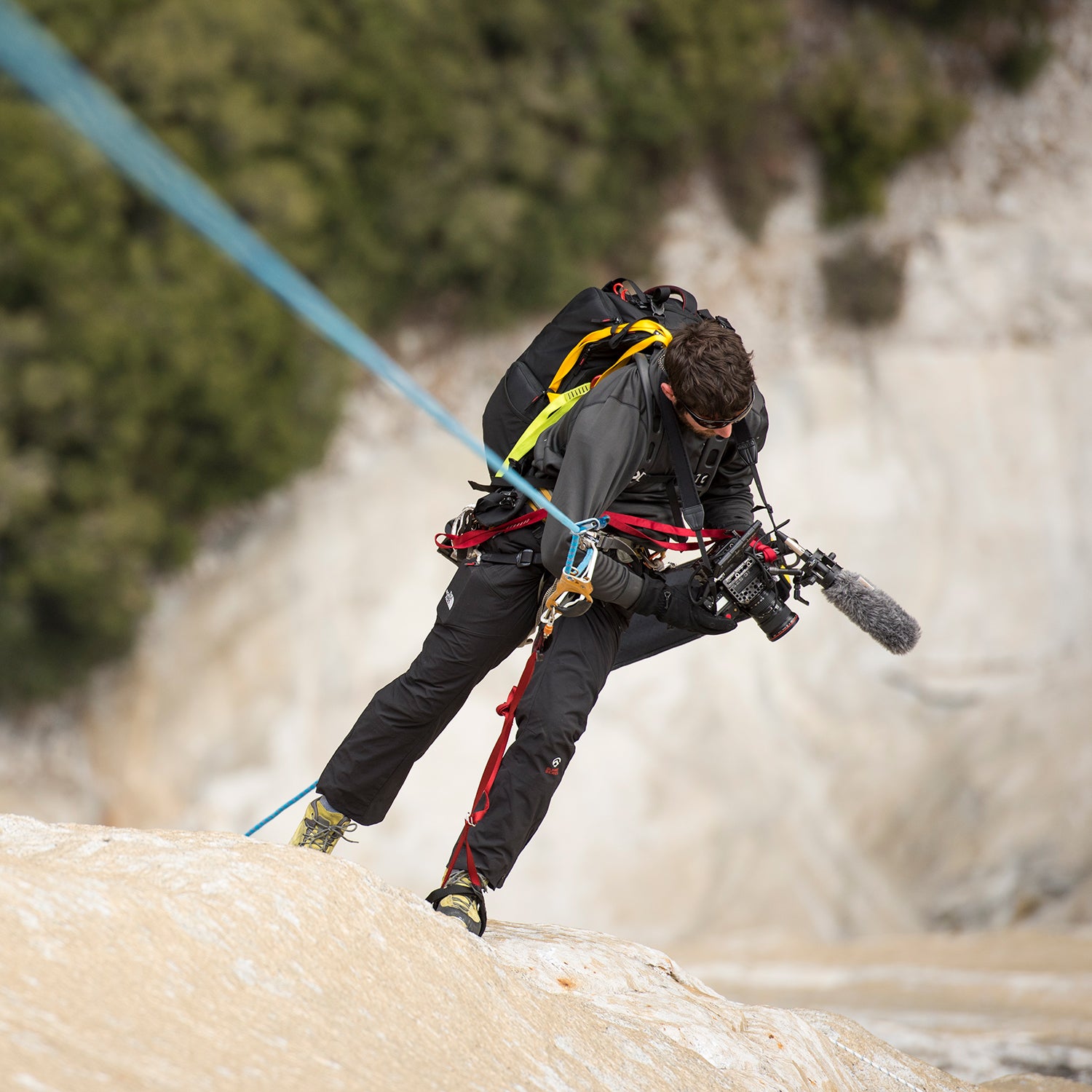For Will and Jim Pattiz, the sibling filmmaking duo behind the award-winning More than Just Parks video series, obtaining permits has long been one of the most frustrating parts of their jobs. In 2019, they were contracted by the National Park Service to work on a film for the park’s maintenance-backlog campaign. Despite the fact that their crew was just the two of them and the Park Service’s own head videographer, their permits were denied multiple times.
“More than Just Parks was born literally as an effort to share national parks with as many folks as possible, with the goal of protecting them,” Will said. “This sort of permitting creates a culture of fear and exclusion, especially if you’re the guy with a camera who’s just trying to get by. It was super frustrating.”
Film and photography rights on U.S. public lands have always been complicated. For years the NPS required anyone engaged in commercial filming to apply for a permit and pay a fee before they could film in a park. The Park Service defined commercial filming as “recording … with the intent of generating income,” which included films, videography, television broadcasts, and documentaries. Fees could range from $150 to $750—and upward—based on on the size of the crew and the specific film locations, and the rules varied depending on the park, the project, and more.
“They really are more than just parks, they’re something different to everybody, and they should be a place for inclusion—these places were set aside for everyone.”
Then, in February, a U.S. district judge in Washington, D.C., ruled that requiring a permit for commercial filming in the national parks is a violation of free speech. That’s a big deal for everyone, not just Hollywood execs and commercial directors. “It was a very antiquated regulation that was unfairly impacting small filmmakers with a tripod and a couple of friends,” Jim says.
The change came about as a result of a lawsuit filed in 2019 by Gordon Price, an independent filmmaker who specializes in horror flicks. Park officials issued him a violation for shooting parts of his film Crawford Road in Virginia’s Colonial National Historic Park, so he sued the government. He argued that requiring a permit for commercial filming infringed on his First Amendment rights, and he challenged the statute requiring permits. On February 22 of this year, U.S. District Judge Colleen Kollar-Kotelly ruled in Price’s favor.
In the opinion, Kollar-Kotelly noted that new technology and the evolving media landscape have changed the nature of filmmaking. The permitting system was intended to mitigate ecological impact, but an independent filmmaker shooting a climbing documentary is a much different beast than a crew shooting the next Star Wars movie.
“Now, over two decades after the passage of § 100905, any individual may easily enter a national park and shoot a high-quality video at will using nothing more than a smartphone,” she wrote. “With the expansion of mass-media outlets like YouTube, such filmmakers may expediently disseminate and monetize those videos on the internet. Yet, so long as these modern filmmakers attempt to commercially market their videos, § 100905 and its implementing regulations require a permit, without any regard for the effect that their filming might have on the preservation of national park land.”
The ruling, which applies across land managed by the NPS, BLM, and U.S. Fish and Wildlife Service, is a win for filmmakers, but what about the potential ecological impact from those big-budget, Hollywood-level productions? Price’s lawyer, Robert Corn-Reeve, says the ruling doesn’t affect the federal government’s ability to engage in resource management. “It can enforce regulations to manage access by large groups or equipment that might adversely affect public lands,” he says. “This ruling simply says that the government cannot require a special permit or charge a fee that is unrelated to any administrative costs for commercial filmmaking simply because it wants a cut of any proceeds.”
According to a press release from February 22, the NPS has now issued interim guidance on film permits in accordance with the ruling. It clearly distinguishes between major film productions and indie filmmakers, and does not require permits or advanced notice for “low impact” filmmaking—that is, “outdoor filming activities in areas open to the public (excluding areas managed as wilderness), consisting of groups of five persons or fewer, and involving equipment that will be carried at all times—except for small tripods used to hold cameras.”
“Other filming activities may need a permit to address potential impacts to resources and the visitor experience,” the release says.
So does that mean you can go film a climbing documentary in Yosemite? Yes, so long as your production qualifies as “low impact.” For context, that means something like Free Solo would most likely still require a permit. But given how much is possible these days with small crews and minimal equipment, it’s basically open season for filming in the parks.
The Park Service will also no longer distinguish between different types of filming, such as commercial, noncommercial, or news-gathering projects. In the past, a major newscast wasn’t subject to obtaining a permit, nor was a production for a nonprofit, no matter the size of the crew or amount of equipment required. From now on, it’s just “filming,” and whether or not you need a permit depends solely on how much your crew will impact the park. According to the NPS, the interim guidance will “eventually be replaced with regulations addressing filming activities that are consistent with the outcome of the litigation.” For now, anyone interested in filming in a park is still encouraged to contact that park directly beforehand.
As a video producer myself, navigating the lengthy application process and red tape has frequently outweighed the benefits of shooting on public lands, and in some cases made it impossible. That’s a shame, because these lands belong to everyone and are one of this country’s greatest assets. For the Pattiz brothers, being able to easily capture the beauty and wonder of the national parks helps them accomplish their mission of sharing the parks with the greater public.
“We’re of the strong belief that greater awareness leads to more protection,” Will says. “The reason we named it More than Just Parks is that they really are more than just parks, they’re something different to everybody, and they should be a place for inclusion—these places were set aside for everyone.”


